

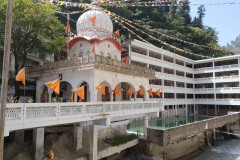
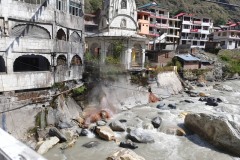

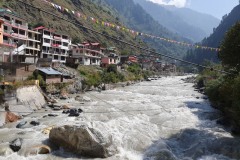


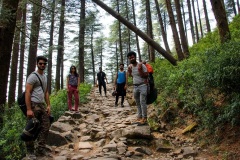
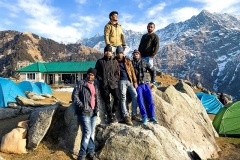
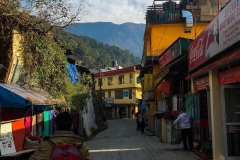


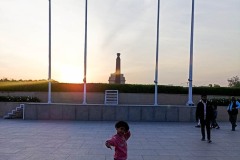
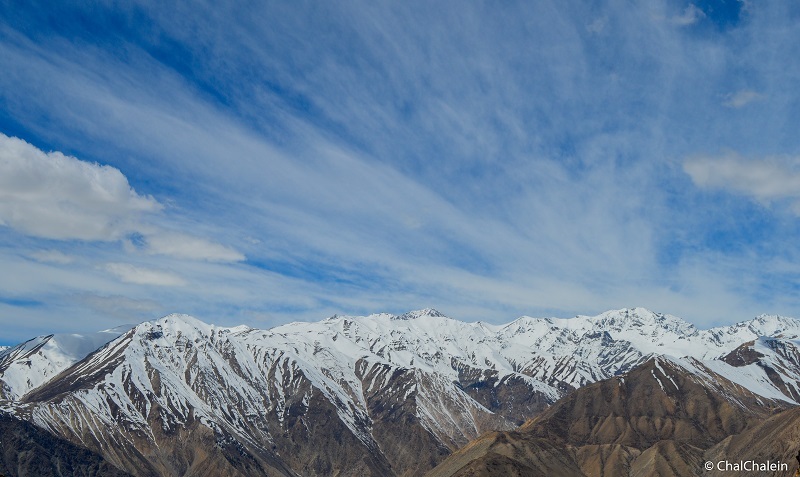
Spiti Valley is home to numerous Buddhist monasteries and breathtaking natural sites, the most of which are unknown and so unspoiled. It is a gorgeous wonderland that echoes with calm and spirituality. Nestled in the state of Himachal Pradesh, the valley features a rugged terrain carved by the pure, swift-moving Spiti river, which meanders through profound canyons and valleys. River rafting is one of the most well-liked water sports activities on the river. Adventure sports enthusiasts will adore the valley’s verdant, emerald scenery, which is encircled by snow-capped mountains and perfect for trekking, paragliding, and camping.
Because of its striking similarities to Tibet’s topography, vegetation, and climate, Spiti is frequently referred to as Little Tibet. Situated 2,745 meters above sea level, it is encircled by Kinnaur, Kullu, Lahaul, and Ladakh. At 14,930 feet, the Kumzum La, also known as Kumzum Pass, provides access to Spiti Valley from Lahaul.
Spiti is best visited between March and June. This season, which runs from March to June, is ideal for those looking for a calm getaway because the temperature there swings from 0 to 15 degrees Celsius. In Spiti, the winters are for the brave. The Manali-Kaza highway is closed throughout the winter, making road connectivity erratic. One activity that really stands out during this season is the snow leopard trek. Planning a trip to Spiti during the monsoon season (July to September) is best avoided because the torrential rains that continue to fall, together with the landslides and treacherous roads, can seriously ruin your vacation experience.
Tabo
Gorgeous sights can be seen in this mud house community, despite its seeming dullness. Unlike other monasteries, which are often positioned atop hills, Tabo Monastery is located at the bottom of a bowl-shaped, level valley. Called the ‘Ajanta of the Himalaya’ because of its galleries of wall paintings and stucco figures, it takes its name from the Maharashtrian site known for its art-filled caves. Tabo is the biggest monastic complex in Spiti Valley, having been founded in 996 AD. It is also known as Tabo Chos-Kor Monastery, and it was allegedly established on behalf of Yeshe-O, the monarch of Guge in the western Himalayas, by the Tibetan Buddhist Iotsawa (translator) Rinchen Zangpo.
Giu Village
Nestled at an elevation of about 10,000 feet above sea level, the charming village of Giu is renowned for its breathtaking surroundings and lovely vistas. This ostensibly tranquil community attracts tourists because of a mysterious 500-year-old naturally preserved mummy. It is thought to be of a lama who, at the age of forty-five, passed away while seated. It still has its hair, nails, and teeth in tact, and is shown sitting with a rosary in its hand.
Ki, Kye, Kee Monastery
At 4,166 meters above sea level, one of the biggest monasteries in Spiti Valley, the enchanting Ki Monastery is a fascinating addition to the traveler’s wish list for spirituality. Visitors are in awe of the magnificence of the numerous exquisite murals, paintings, and stucco pictures that adorn this tranquil Buddhist sanctuary. These artworks are magnificent examples of monastery architecture from the fourteenth century. Every time the chham (masked and costume dance) dance is done, unique wind instruments are also employed as a part of the orchestra. A stunning assortment of weapons is also on display; they might have been used in any raids by marauders on the abbey. His Holiness the Dalai Lama conducted the Kalchakra ritual here in August 2000.
Rock Climbing And Trekking
The mountains encircling Spiti Valley, covered with snow, offer a perfect setting for practicing rock climbing. The breathtaking panorama of nature’s beauties, including towering peaks, profound valleys, and a charming stream winding through dense vegetation, is the ultimate reward for all the hard work and climbing. There are two kinds of treks available in Spiti Valley: Low Altitude Trekking, which takes place below the snow line, and High Altitude Trekking, which allows hikers to traverse high passes, snowfields, and challenging terrain. The most well-liked hike is to Chandratal Lake, which allows you to explore the stunning Moon Lake. Hiking is another option. Parang La is nearly 18,000 feet above sea level and takes nine days to reach. It starts in Kaza and travels through one of the highest villages, Kibber.
Losar
Losar, the region’s first populated village, is located where the Losar and Peeno streams converge. The elevation of this location is 4,080 meters above sea level. This village is at the very end of the valley, very up to the Indo-Chinese border, with a terrain that is quite similar to Ladakh. For those who enjoy the outdoors, Losar is a must-see location because of its majestic rivers, towering mountains, and breathtaking views.
Kibber
Kibber, a mountain community 4,205 meters above sea level, is well-known for its monasteries and scenic surroundings. Many claim that Kibber’s landscape is similar to that of Tibet and Ladakh, and as such, its arid grandeur is what makes it so beautiful. The settlement that serves as the starting point for multiple high-altitude treks is located near the well-known Ki Monastery, the biggest monastery in the valley. Scattered across 1,400 square kilometers, the Kibber Sanctuary is another point of interest. It is located little outside of the hamlet. This is the only sanctuary in India situated in a frigid desert, where ibex and blue sheep can be found.
Dhankar
Within Spiti, one of the most visited places is the city of Dhankar. The main draw here is the approximately 1,000-year-old Dhankar Gompa, also known as the Dhankar Monastery. It is situated at a height of roughly 3,370 meters. The location was formerly the castle of Nono, the Spiti monarch; the word “dhankar” means fort in the local vernacular. When this fort monastery was first being built, it was also utilized as a jail. Along with a life-size silver statue of Vajradhara, the supreme embodiment of all male Buddhas, resting atop a glass altar adorned with scarves and flowers, one may see many Buddhist scriptures written in the Bhoti script. A stunning statue of Vairochana, also known as the Dhayan Buddha, is another attraction. There are about 150 lamas living in this monastery. A 2-kilometer hike can also be taken by tourists to the Dhankar Lake, which is located above the monastery.
Flying to Manali or Shimla is one way to get to Spiti Valley. Direct flights are available to Shimla from Delhi, Chandigarh, and Kullu. To get to Kaza from Manali, use a bus or a taxi.
Jogindernagar railway station is the closest one. The wide gauge train stations closest to you are Shimla and Chandigarh. From these two cities, one can go to Spiti Valley by bus or cab.
A motorable route that travels from Shimla to Kaza via Kinnaur is accessible for around eight months of the year. Buses run from July to October from Manali to Kaza.